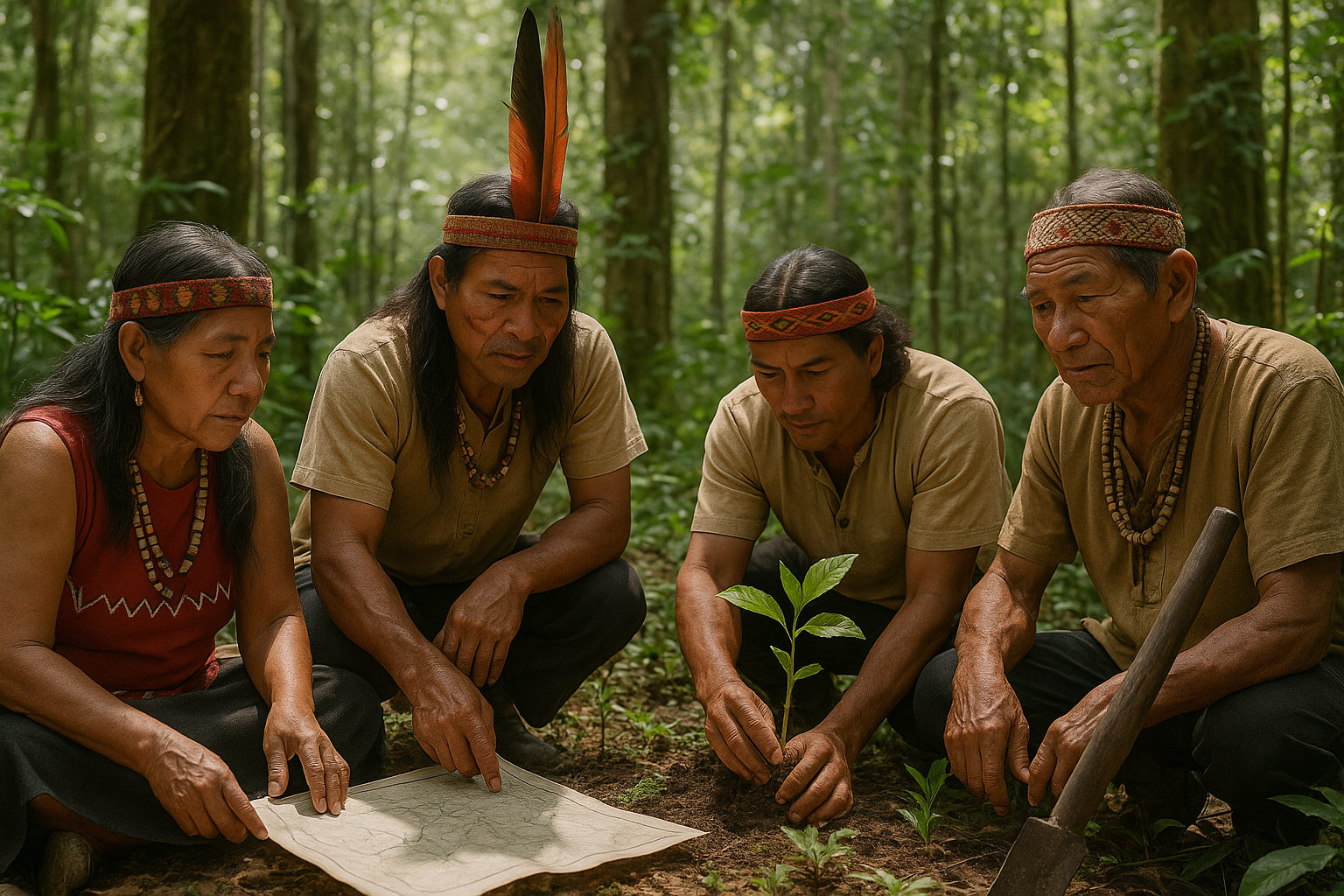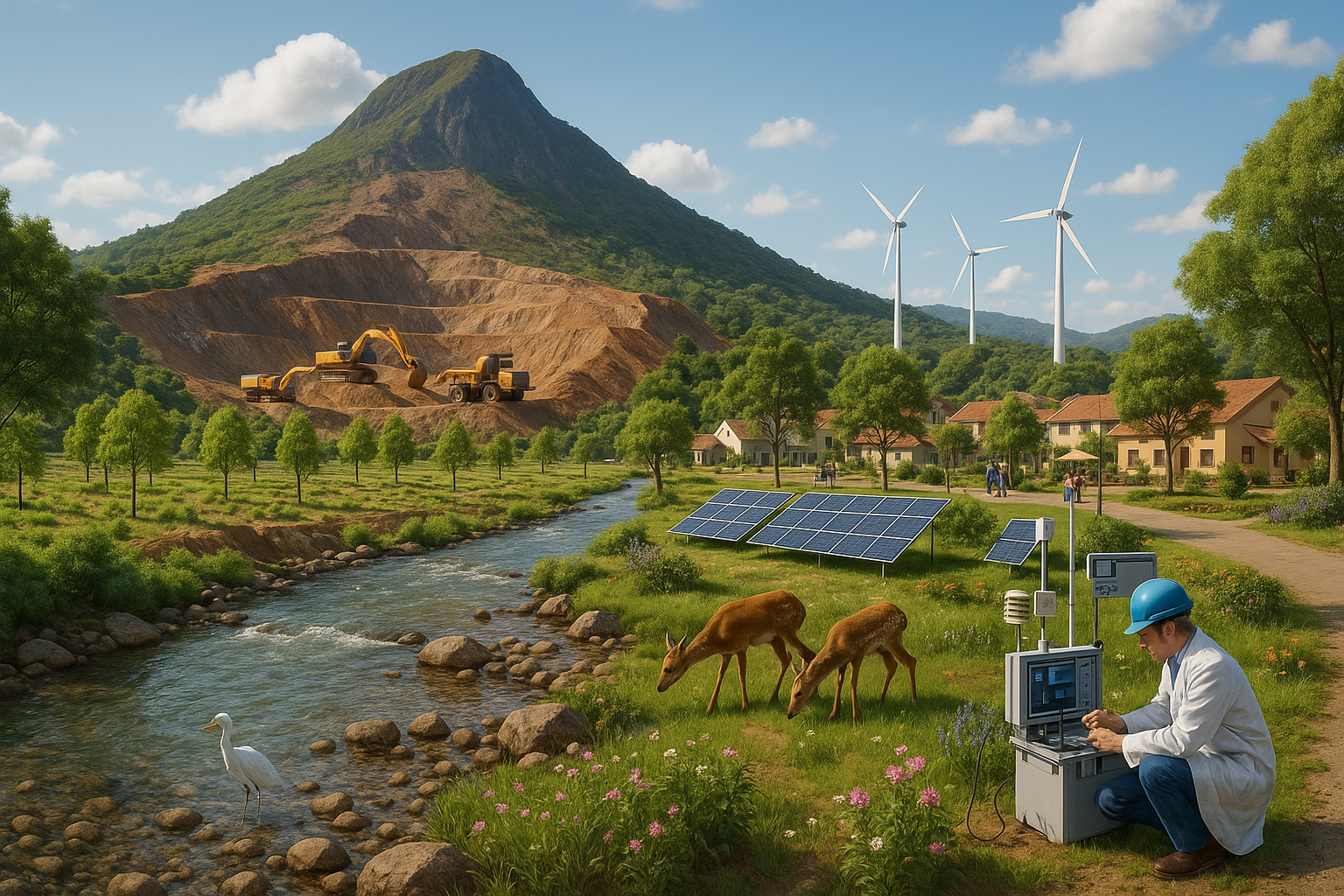In a world that is increasingly interconnected yet paradoxically fragmented, the concept of boundaries—both tangible and intangible—plays a crucial role in shaping our identities and interactions. Borders have traditionally been seen as definitive lines, separating nations, cultures, and communities. However, in today’s globalized society, these boundaries are becoming more fluid, challenging our perceptions of identity and belonging. Welcome to “Breaking Boundaries: Exploring Conceptual Borders and Identity in a Globalized World,” where we delve into the complexities of how borders impact our lives, influence our sense of self, and shape the way we perceive the world around us.
As we embark on this journey, it’s essential to recognize that boundaries are not just physical. They are conceptual frameworks that dictate how we understand the world and ourselves. They exist in our minds as much as they do on maps. From cultural and linguistic borders to social and economic divides, these boundaries influence our daily interactions and our broader worldview. In this article, we will explore how globalization challenges these traditional borders, blurring lines that were once considered immutable. As cultures intertwine and economies merge, individuals are compelled to navigate a complex web of identities and affiliations, often leading to a redefinition of what it means to belong.
The exploration of boundaries and identity in a globalized context is not just an academic exercise—it is a necessity for anyone seeking to understand the dynamics of our modern world. The process of globalization has brought about unprecedented opportunities for cultural exchange and economic collaboration. Yet, it has also led to tensions and conflicts, as communities grapple with preserving their unique identities while embracing new influences. Throughout this article, we will examine case studies from different regions and cultures, shedding light on how people negotiate their identities amidst the pressures of a globalized environment. We will also explore theoretical perspectives on the fluidity of identity and the concept of hybrid cultures that emerge when boundaries are crossed.
By the end of this exploration, we hope to provide a comprehensive understanding of how boundaries—both seen and unseen—affect our lives in profound ways. From the way we communicate and interact to the way we perceive ourselves and others, boundaries are constantly being redefined. 🌍 Our goal is to challenge preconceived notions, encourage critical thinking, and inspire a deeper appreciation for the diverse and interconnected world we inhabit. As you read on, consider your own experiences with boundaries and identity, and reflect on how they shape your perspective in an ever-evolving global landscape.
The Concept of Boundaries in a Globalized World
The modern world is characterized by an unprecedented level of interconnectedness, where the boundaries that once defined nations, cultures, and identities are continually being challenged and redefined. In this globalized context, the concept of boundaries extends beyond geographical lines to encompass cultural, social, and even personal dimensions. As the world becomes increasingly interwoven, the traditional borders that separate one identity from another are being examined, negotiated, and, in some cases, dismantled. This process raises compelling questions about what it means to belong, the nature of identity, and how individuals and societies navigate the evolving landscape of global culture.
Historically, boundaries served as protective measures, safeguarding cultures, economies, and political entities from external influences. However, globalization has blurred these lines, leading to a complex tapestry of interdependent economies, multicultural societies, and hybrid identities. This transformation prompts us to explore how people redefine their sense of self and community in response to shifting boundaries. Are these changes leading to a more inclusive world, or are they fueling a backlash of nationalism and identity politics? The answers are nuanced and multifaceted, inviting a deeper examination of the forces at play in a globalized environment.
In this article, we will explore the conceptual borders of identity in a globalized world, examining how these boundaries are shaped and reshaped by cultural exchanges, technological advancements, and the movement of people. We will delve into the tension between globalization and localization, exploring how individuals negotiate their identities in a world that is simultaneously expanding and contracting. Through a detailed analysis of these dynamics, we aim to provide a comprehensive understanding of how conceptual boundaries are evolving in the 21st century.
Redefining Identity Through Cultural Exchange
Cultural exchange is a hallmark of globalization, facilitating interactions between diverse groups and fostering a cross-pollination of ideas, practices, and beliefs. This exchange challenges traditional notions of identity, as individuals are exposed to a myriad of influences that can transform their understanding of self and community. As cultures intersect, they create new forms of expression and identity that transcend traditional boundaries.
The impact of cultural exchange on identity can be observed in various domains, including art, language, and lifestyle. In art, for example, the fusion of different styles and techniques gives rise to innovative forms that reflect a blend of cultural influences. Similarly, language evolves as people incorporate foreign words and phrases into their vernacular, creating hybrid languages that symbolize cultural convergence. Lifestyle choices, too, are influenced by cultural exchanges, with individuals adopting practices from different cultures in their daily lives.
However, the process of cultural exchange is not without its challenges. While it can lead to the enrichment of identity, it can also result in cultural homogenization, where unique cultural traits are diluted or lost. This phenomenon raises concerns about the preservation of cultural heritage and the potential loss of cultural diversity. As people navigate these changes, they must strike a balance between embracing new influences and maintaining a connection to their cultural roots.
The Role of Technology in Shaping Boundaries
Technology plays a pivotal role in shaping and redefining boundaries in a globalized world. The advent of the internet and digital communication platforms has revolutionized the way people connect, share information, and express their identities. These technological advancements have effectively dissolved geographical barriers, allowing individuals to interact with others across the globe in real time.
Social media platforms, in particular, have become arenas for identity exploration and expression. Users can curate their online personas, share their experiences, and engage with diverse communities, transcending physical boundaries. This digital interaction fosters a sense of global citizenship, as people develop connections that extend beyond their immediate environment. However, it also raises questions about the authenticity of online identities and the potential for digital echo chambers that reinforce existing beliefs.
The influence of technology on boundaries extends to the economic realm as well. E-commerce platforms have transformed traditional market boundaries, enabling businesses to reach global audiences and consumers to access products from around the world. This shift has significant implications for local economies and the concept of national markets, prompting a reevaluation of economic boundaries in the digital age.
Comparative Analysis of Traditional and Digital Boundaries
| Aspect | Traditional Boundaries | Digital Boundaries |
|---|---|---|
| Communication | Localized, face-to-face interactions | Global, instantaneous digital communication |
| Commerce | Physical marketplaces | Online platforms, global reach |
| Identity | Defined by cultural and geographical context | Flexible, influenced by global interactions |
As we explore the role of technology in shaping boundaries, it is essential to consider both its opportunities and challenges. While technology can empower individuals to forge new connections and identities, it also necessitates a critical examination of issues such as digital privacy, data security, and the digital divide. By understanding the complex interplay between technology and boundaries, we can better navigate the opportunities and pitfalls of a digitally interconnected world.
Migration and the Fluidity of Borders
Migration is a powerful force that reshapes boundaries, both physical and conceptual. As people move across borders, they bring with them their cultures, traditions, and identities, contributing to the dynamic nature of global societies. Migration challenges the notion of fixed national boundaries, as individuals navigate multiple cultural contexts and forge transnational identities.
The experience of migration varies widely, influenced by factors such as economic opportunities, political climates, and social networks. For some, migration offers the promise of a better life and new opportunities, while for others, it is a response to conflict or environmental challenges. Regardless of the circumstances, migration fundamentally alters the fabric of societies, introducing new cultural elements and fostering intercultural dialogue.
Migrants often find themselves negotiating dual or multiple identities, balancing their heritage with the cultural norms of their new environment. This negotiation can lead to the emergence of hybrid identities that reflect a blend of influences, challenging the notion of a singular, static identity. At the same time, migration can also provoke tensions and conflicts, as societies grapple with issues of integration, diversity, and social cohesion.
Understanding the fluidity of borders in the context of migration requires a nuanced approach that considers both the individual and collective dimensions of the experience. As societies become increasingly multicultural, they must develop frameworks for managing diversity and fostering inclusion, ensuring that all individuals have the opportunity to thrive in a globalized world.
Migration Trends and Their Impact
- Economic Impact: Migrants contribute to the economy through labor, entrepreneurship, and innovation, driving growth and diversification.
- Cultural Exchange: Migration fosters cultural exchange, enriching societies with new perspectives, traditions, and practices.
- Social Challenges: Issues such as discrimination, xenophobia, and integration pose challenges that require proactive policy and community engagement.
To gain further insights into the complexities of migration and its impact on boundaries, watch the following video that explores the human stories behind migration and its global implications:
Understanding Global Migration: Perspectives and Challenges – Channel: Global Insights

Conclusion
Crafting a conclusion for an article that tackles the intriguing theme of “Breaking Boundaries: Exploring Conceptual Borders and Identity in a Globalized World” is a significant task. This topic delves into the complexities of identity, culture, and the invisible lines that both connect and divide us in today’s interconnected world. Through the exploration of these conceptual borders, we have embarked on a journey to better understand the shifting nature of identity and its implications in a globalized society.
Throughout this article, we’ve navigated the intricate landscape of identity, examining how globalization impacts personal and collective identities. We began by defining the conceptual borders that are not only geographical but also cultural, social, and psychological. These borders shape our perceptions, beliefs, and interactions in an increasingly interconnected world. As we explored the fluidity of these boundaries, we recognized that identities are no longer confined to traditional categories but are instead constantly evolving.
One of the key points highlighted is the role of globalization in blurring these traditional boundaries. The rapid exchange of information, culture, and ideas has created a dynamic environment where identities are continually reshaped. We explored how globalization fosters a sense of interconnectedness while simultaneously posing challenges to cultural authenticity and identity preservation. This duality underscores the need to navigate globalization thoughtfully, balancing the embrace of new influences with the preservation of cultural heritage.
Furthermore, the article delved into the concept of hybrid identities, illustrating how individuals today often navigate multiple cultural spheres. These hybrid identities challenge the notion of a singular, static identity, offering instead a more fluid and dynamic understanding of self. We discussed how embracing hybrid identities can lead to greater cultural empathy and mutual understanding, fostering a more inclusive world.
In addition, we examined the role of technology and social media in shaping modern identities. In a digital age, individuals have the power to curate and project their identities across various platforms, transcending geographical borders. This digital empowerment, however, comes with its own set of challenges, including issues of privacy, authenticity, and the pressure to conform to online personas.
The exploration of identity in a globalized world also touched on the importance of cultural exchange and dialogue. Encouraging conversations across cultures can lead to greater understanding and collaboration, breaking down stereotypes and misconceptions. As we navigate the complexities of identity, it’s crucial to foster environments where diverse voices are heard and respected.
In conclusion, the exploration of conceptual borders and identity in a globalized world is an ongoing journey that requires continuous reflection and adaptation. As we break boundaries and embrace the fluidity of identity, we are challenged to redefine what it means to belong in a rapidly changing world. This journey invites us to celebrate diversity, nurture empathy, and build bridges of understanding across cultures.
The importance of this topic cannot be overstated. In a world where borders are increasingly porous and identities are multifaceted, understanding the dynamics of identity is crucial for fostering peaceful coexistence and cooperation. By breaking boundaries and embracing the complexity of identity, we have the opportunity to create a world where everyone feels seen, heard, and valued.
We encourage you, our readers, to reflect on your own experiences with identity and conceptual borders. How do you navigate the complexities of identity in a globalized world? Share your thoughts and stories, and let’s continue this dialogue together. By commenting and sharing this article, you contribute to a broader conversation that is vital for building a more inclusive and understanding world.
In the words of global thought leader Kwame Anthony Appiah, “Identity is not a fixed thing; it’s not something that’s handed down from generation to generation without change. It’s something that we constantly create for ourselves.” Let this article be a starting point for your own journey of exploration and understanding in the ever-evolving landscape of identity.
🌍✨
Feel free to explore more about this topic by visiting reputable sources such as:
– The Identity Project: https://www.identityproject.org
– Globalization and Identity by the Global Policy Forum: https://www.globalpolicy.org
Thank you for joining us on this exploration of boundaries and identity. We hope it inspires you to think differently and embrace the beautiful complexity of our interconnected world.
Toni Santos is a visual storyteller and artisan whose creations celebrate the poetry of the natural world. Through his thoughtful artistic lens, Toni captures the elegance of botanical forms, transforming them into meaningful expressions of symbolism, resilience, and timeless beauty.
His journey is deeply rooted in a passion for flora and the mysteries they carry. From the shape of a petal to the curve of a vine, each design Toni brings to life reflects a deeper narrative — one of growth, transformation, and harmony with nature. Whether crafting symbolic floral jewelry, enchanted botanical illustrations, or seasonal visual studies, Toni’s work evokes the quiet magic found in Earth’s most delicate details.
With a background in handcrafted artistry and visual design, Toni blends technique with intention. His creations do more than decorate — they speak, often inspired by ancient meanings behind flowers, the cycles of the seasons, and the invisible bonds between nature and spirit.
As the creative voice behind Vizovex, Toni shares this botanical journey with the world, offering curated stories, handcrafted collections, and thoughtful articles that help others reconnect with nature’s symbolism and artistic essence.
His work is a tribute to:
The quiet power of flowers and their messages
The art of visual symbolism in everyday life
The beauty of slowing down to see what’s hidden in plain sight
Whether you’re an artist, a nature lover, or someone drawn to the deeper meanings behind the natural world, Toni welcomes you to explore a space where aesthetics meet soul — one petal, one story, one creation at a time.





